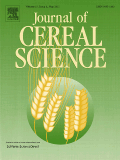
Journal of Cereal Science
Scope & Guideline
Unveiling the science behind cereal grains.
Introduction
Aims and Scopes
- Grain Quality and Processing:
Research in this area emphasizes the physicochemical properties of various cereal grains, assessing how different processing techniques affect their quality, texture, and nutritional value. - Nutritional and Health Benefits:
The journal explores the health benefits associated with cereal consumption, including the impact of bioactive compounds and dietary fibers on health outcomes. - Innovative Processing Techniques:
A consistent focus on novel processing methods, such as ultrasonication, microwave treatment, and fermentation, which enhance the functional properties of cereal products. - Genetic and Agronomic Studies:
Investigations into genetic factors affecting grain quality, yield, and resistance to environmental stresses, contributing to breeding programs aimed at improving cereal crops. - Sustainable Practices in Cereal Production:
Research that addresses sustainability in cereal agriculture, including the effects of fertilization and cultivation practices on grain quality and environmental impact.
Trending and Emerging
- Functional Foods and Nutraceuticals:
There is a notable increase in studies exploring the health benefits of cereal grains, particularly their roles as functional foods rich in bioactive compounds that contribute to disease prevention. - Innovative Ingredients from Cereal By-products:
Research is trending towards utilizing by-products of cereal processing as functional ingredients, enhancing nutritional profiles and sustainability. - Interdisciplinary Approaches:
An emerging trend is the integration of different scientific disciplines, such as genomics, nutrition, and food technology, to address complex challenges in cereal science. - Climate Resilience in Cereal Production:
Research focusing on how climate change impacts cereal quality and yield is gaining momentum, emphasizing the need for resilient agricultural practices. - Sustainable Cereal Production Practices:
There is a growing emphasis on sustainable agricultural practices, including organic farming and integrated pest management, to enhance grain quality and environmental sustainability.
Declining or Waning
- Traditional Grain Processing Methods:
Research focused on conventional grain processing techniques has seen a decrease, as newer methods gain traction and demonstrate more effective results. - Basic Grain Storage Studies:
There has been a waning interest in studies solely focused on the storage of grains without considering the implications for quality and processing. - Single Crop Focus Studies:
Research that concentrates on a single cereal crop is less common, as interdisciplinary approaches that incorporate multiple grains are becoming more favored.
Similar Journals
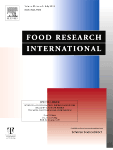
FOOD RESEARCH INTERNATIONAL
Transforming Research into Food SolutionsFOOD RESEARCH INTERNATIONAL is a premier academic journal published by ELSEVIER, specializing in the field of Food Science. With an impressive impact factor and ranked Q1 in the 2023 category quartiles, it stands at the forefront of research, positioned 17th out of 389 in the Scopus ranking for Agricultural and Biological Sciences, attaining a commendable 95th percentile. The journal publishes high-quality, peer-reviewed articles that cover a broad spectrum of topics, including food safety, quality control, nutrition, and biotechnology, making it an invaluable resource for academics, industry professionals, and students alike. As FOOD RESEARCH INTERNATIONAL seeks to enhance understanding and advance technologies related to food, it encourages innovative perspectives and interdisciplinary research. The journal, active from 1992 and continuing through 2024, is an essential platform for disseminating vital findings and fostering collaboration within the global food science community.
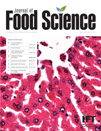
JOURNAL OF FOOD SCIENCE
Uncovering the Secrets of Food Science ExcellenceJOURNAL OF FOOD SCIENCE, published by Wiley, is a premier journal dedicated to advancing the field of food science, bridging the gap between fundamental research and practical application. With an impressive impact factor reflecting its authoritative status, the journal is ranked in the Q1 quartile for Food Science in 2023 and boasts a Scopus ranking of #71 out of 389, placing it in the 81st percentile within Agricultural and Biological Sciences. First launched in 1936, the journal continues to serve as an essential platform for researchers, professionals, and students to disseminate innovative studies and reviews that address critical issues in food quality, safety, and technology. While not currently offering open access, its rigorous peer-review process ensures the dissemination of high-quality and impactful research. Researchers engaged in the vital disciplines of food science will find this journal indispensable for keeping abreast of cutting-edge developments in the field.

Journal of Food and Nutrition Research
Fostering Interdisciplinary Approaches to Food ScienceJournal of Food and Nutrition Research, published by the VUP FOOD RESEARCH INST in Bratislava, Slovakia, serves as a vital platform for disseminating cutting-edge research in the fields of food science and nutrition. With an ISSN of 1336-8672 and an E-ISSN of 1338-4260, this journal emphasizes the importance of interdisciplinary approaches to address contemporary challenges related to food quality, dietary practices, and nutritional health. Notably recognized in the 2023 Scopus rankings, the journal is classified in Q3 quartiles for both Food Science and Nutrition & Dietetics, providing a forum for researchers aiming to enhance knowledge and practices within these domains. Those engaged in academia and industry will find the journal invaluable for its comprehensive scope, which covers novel food technologies, nutrition interventions, and the implications of dietary behaviors. Though not open access, the journal is dedicated to enriching the academic conversation and contributing to advancements in public health and nutrition policies.

Journal of Food Science and Technology-Ukraine
Pioneering Research in Food Science and TechnologyJournal of Food Science and Technology-Ukraine, published by the Odesa National University of Technology, stands as a pivotal platform dedicated to the dissemination of high-quality research in the field of food science and technology. With its open access policy established in 2014, the journal fosters global knowledge sharing and accessibility, enabling researchers, professionals, and students to access critical findings and advancements in food technology without barriers. The journal's commitment to publishing innovative studies, reviews, and case analyses reinforces its role in addressing contemporary challenges in food safety, preservation, processing, and nutritional quality. With ISSN 2073-8684 and E-ISSN 2409-7004, it serves as a valuable resource for the academic community, supporting the advancement of food science knowledge and its practical applications.
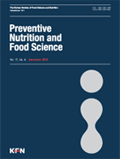
Preventive Nutrition and Food Science
Transforming Dietary Insights into Preventive StrategiesPreventive Nutrition and Food Science, an esteemed journal published by the Korean Society of Food Science and Nutrition, serves as a pivotal platform for the dissemination of innovative research and insights in the fields of food science, nutrition, and dietetics. With an ISSN of 2287-1098 and an E-ISSN of 2287-8602, this journal is dedicated to advancing knowledge from 2012 through 2024, showcasing contributions that reflect the interplay between nutrition, health, and preventive strategies. Indexed in Scopus, it proudly holds a Q2 ranking in Food Science and a Q3 ranking in Nutrition and Dietetics as of 2023, positioning it among influential publications within these disciplines. Researchers, professionals, and students can explore cutting-edge studies that contribute significantly to evidence-based practices, enhancing public health and nutritional care. Although it operates under a subscription model, the journal plays a crucial role in fostering a deeper understanding of preventive nutrition, advocating for advancements that address contemporary dietary challenges.
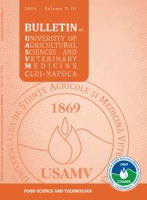
Bulletin of University of Agricultural Sciences and Veterinary Medicine Cluj-Napoca-Food Science and Technology
Advancing Food Science for a Sustainable FutureBulletin of University of Agricultural Sciences and Veterinary Medicine Cluj-Napoca - Food Science and Technology is a prominent peer-reviewed journal dedicated to advancing the field of food science and technology. Published by the University of Agricultural Sciences and Veterinary Medicine Cluj-Napoca, this open-access journal has been serving the academic community since 2013, promoting the dissemination of high-quality research that addresses pressing issues in food safety, quality, and innovation. With its ISSN 2344-2344 and E-ISSN 2344-5300, the journal aims to bridge the gap between academia and industry by providing a platform for scholars and practitioners to share their findings, insights, and methodologies. Situated in the heart of Romania, the journal reflects the country's rich agricultural heritage and its commitment to enhancing global food systems. By maintaining a rigorous editorial standard, the Bulletin ensures that it remains a vital resource for researchers, industry professionals, and students who are keen to explore the latest developments in food science.
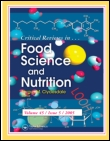
CRITICAL REVIEWS IN FOOD SCIENCE AND NUTRITION
Advancing Knowledge in Food Science and NutritionCRITICAL REVIEWS IN FOOD SCIENCE AND NUTRITION, published by Taylor & Francis Inc, is a premier peer-reviewed journal dedicated to advancing the understanding of food science and nutrition. With its ISSN 1040-8398 and E-ISSN 1549-7852, this influential journal has established itself as an essential resource in the field, featuring high-quality reviews and critical analyses that foster innovation and knowledge sharing among researchers, practitioners, and academics. Recognized as a Q1 journal in Food Science, Industrial and Manufacturing Engineering, and Medicine (miscellaneous) for 2023, it ranks impressively within the top percentiles of its respective fields, making it a valuable platform for impactful research. Although the journal does not currently offer open access, it continues to attract a readership eager to explore the intricacies of food science and its applications, thereby shaping future advancements in the industry. With an extensive history dating back to 1981 and convergence up to 2024, CRITICAL REVIEWS IN FOOD SCIENCE AND NUTRITION remains committed to providing comprehensive reviews that illuminate contemporary challenges and solutions in the domain of food science and nutrition.
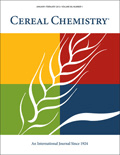
CEREAL CHEMISTRY
Driving Innovation in Cereal Chemistry Since 1974Cereal Chemistry is a prestigious journal published by WILEY, dedicated to advancing knowledge in the fields of Food Science and Organic Chemistry. With an ISSN of 0009-0352 and E-ISSN of 1943-3638, this journal has been a vital resource for researchers and professionals since its inception in 1974. Its esteemed Q2 ranking in both Food Science and Organic Chemistry reflects its significant contribution to these domains, as highlighted by its Scopus rankings, placing it in the 66th and 59th percentiles in their respective categories. Despite being a subscription-based journal, Cereal Chemistry ensures high visibility and accessibility for scholarly articles exploring cereal science, grain technology, and their applications in food production and processing. By fostering rigorous peer-reviewed research and critical advancements in methodology, this journal plays an essential role in the evolution of cereal science and supports innovation that fuels both academic inquiry and industry practices.

CEREAL RESEARCH COMMUNICATIONS
Empowering researchers through multidisciplinary dialogue.Cereal Research Communications is a premier academic journal published by Springer Heidelberg, dedicated to advancing knowledge in the field of agri-food science with a particular focus on agronomy, crop science, genetics, and physiology. With a strong reputation reflected in its Q2 ranking in Agronomy and Crop Science, this journal serves as a vital resource for researchers, professionals, and students alike. Published in Hungary, the journal facilitates the dissemination of innovative research and practice, covering a broad spectrum from crop genetics to physiological processes, thereby fostering a multidisciplinary dialogue among scholars. The journal has maintained a consistent publication record since its inception in 1993 and will continue its commitment to academic excellence and relevance through 2024. Although it operates under a subscription model, its contributions are crucial for those engaged in improving crop productivity and sustainability. For those looking to connect with cutting-edge research and contribute to the food security dialogue, Cereal Research Communications remains an essential platform in the field.

Foods is a premier open access journal published by MDPI, based in Switzerland, that has been at the forefront of disseminating high-quality research in the fields of food science, health professions, and plant science since its establishment in 2012. With an impressive convergence of interdisciplinary studies spanning various aspects of food, nutrition, and microbiology, the journal aims to provide a comprehensive platform for researchers and professionals to share innovative ideas and findings. Maintained as a Q1 journal in multiple categories for 2023, including Food Science and Health Professions, Foods has garnered significant recognition within the academic community, reflected in its strong Scopus rankings and percentiles across various disciplines. The journal not only promotes open access to enhance the visibility and accessibility of research but also encourages the exploration of sustainable food systems and health-related issues, thus contributing to essential discussions in today's society. For those looking to advance their understanding and expertise in food-related sciences, Foods serves as an enduring resource for groundbreaking studies and critical insights.